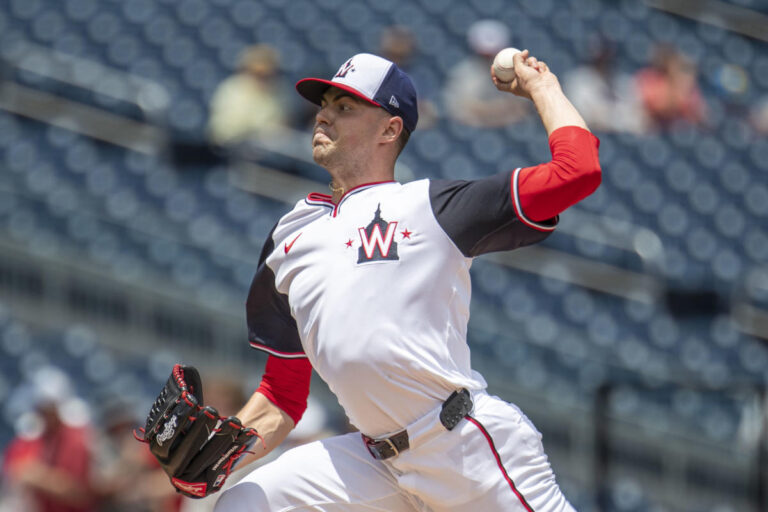The Shuffle Up series continues with starting pitchers. If we were facing a new draft today, I would rank and break down the board like this:
Remember, if there is such a position that “nobody knows anything,” it is this one.
This is just an audition. Assume that players with the same salary are treated equally. I put injured pitchers at the bottom of the rankings, but that’s not up for debate. Everyone has their own optimistic or pessimistic view of injuries. I’m always going to be very careful with injured pitchers.
Disagree? That’s fine. That’s the premise of the game. Follow me on Twitter/X: @scott_pianowski.
And then we depart.
Big Ticket
Glasnow is looking to pitch a staggering 195 innings, but the Dodgers will never let him get close to that number. No team knows better than the Dodgers that the only month that really matters is October. He leads the major leagues in strikeouts and K/9, has committed a league-worst 11 wild pitches, and has yet to strike out a batter. I suspect he will pitch 165-175 innings and inevitably develop a pseudo-disease called Doziertis.
Fried’s strikeout rate is down and his walks are up, but his best ground ball rate in the league makes up for a lot of his shortcomings. He’s also getting positive points from six different pitches. Fried has been one of the things that worked well for Atlanta in a year that didn’t produce much.
Legitimate Building Blocks
Crochette’s overall record suggests a 2.42 ERA, nearly a full run below his actual 3.25. Chicago’s awful offense is obviously a hindrance, but Crochette still managed a respectable six wins. The disadvantage of a platoon hasn’t helped him, either, as he’s batting a mediocre .194/.242/.351 against right-handers (and predictably even worse against left-handers). The White Sox are the garbage dump of the AL, but Crochette is a bona fide star.
We all know Atlanta’s Lopez will regress from his stellar 1.57 ERA, but what is his true talent level? Savant suggests a 3.79 ERA, and his SIERA isn’t too far off at 3.61. The usual signs of good fortune are showing up, with an 87.4% strand rate and just a 5.1% HR/FB rate. Lopez could start all year and is the type of pitcher that is hard to trade, so he may be labeled as a forced hold. Opponents may view this breakout with some skepticism.
Gausman’s fastball has dipped a bit (it’s been slow, especially in his most recent starts) and his slugging rate has soared. His abysmal 4.24 ERA should actually be over 5, according to Baseball Savant data. Gausman’s fastball, splitter and slider have all been negative pitches in the first half of the year. To get out of the Gausman business, you need something to sell. I’d wait for a turnaround or two and then see how the market responds.
To praise or not to praise
Gore has really broken out this year, but it’s just a little hidden. His strikeout and walk rates are trending in the right direction, his strikeout rate has improved, and the barrel rate against him has been cut in almost half. The FIP suggests Gore should have a 2.83 ERA, but Savant’s data justifies that number. Gore has always leaned toward the fly ball, which will translate into home runs, but his HR/FB is above league average. Washington is not far from being a championship team, and Gore has the makings to be a favorite pitcher in the playoffs.
I’d love to call Waldron a knuckleballer, but I have to admit he throws that pitch just over a third of the time. His breakout came from getting good results with four different pitches: fastball, sinker, slider and knuckler. There’s a risk of a meltdown, given his fastball tops out at 90.6 mph, but we’re far enough into the season that Waldron is worth a set-and-forget salary. He’s strangely struggling at Petco Park (4.36 ERA) and has a 2.86 ERA in nine road games.
Room for some reasonable upside
Quantrill is a pitcher you can’t hit unless you hit him, but he’s weathered Colorado (3.97 ERA) and has been great on the road (3.06 ERA), making him a legitimate target for the championship when trade season begins next month. Quantrill has allowed three runs or less in 11 starts, with only two truly awful starts. The strikeout column will need to be filled elsewhere, but that kind of consistency could work in mixed leagues if you can work the schedule around it.
Detroit’s disappointing offense limited Olson to just one win, but his 3.04 ERA and 1.23 WHIP are good enough for any mixed league manager. Olson’s strikeout rate is down a bit since his strong debut last year, but so is his walk rate. Positive marks for chase rate and ground ball rate support Olson’s consistency.


